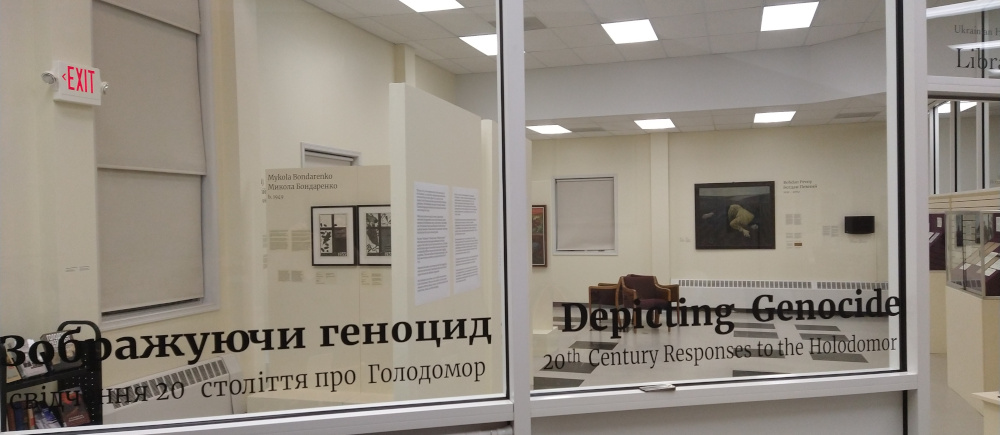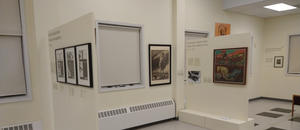Depicting Genocide: 20th Century Responses to the Holodomor
Depicting Genocide: 20th Century Responses to the Holodomor
Depicting Genocide: 20th Century Responses to the Holodomor
View the online exhibition
Rent a traveling version of this exhibition
The Holodomor was an artificial famine orchestrated by Stalin regime in 1932 and 1933 that was targeted at Soviet Ukraine and other areas with historic ethnic Ukrainian populations (such as the Kuban region of the northern Caucasus). Despite the millions of people who perished, the Holodomor has not been a part of public consciousness in the United States, especially when compared to the Holocaust and the Armenian, Cambodian, Bosnian, or Rwandan genocides. This is not an accident: it is due in good measure to efforts at denial and erasure by the Soviet Union, Russia, and their apologists.
But memory of the Holodomor did not vanish. In Soviet Ukraine, older family members would whisper their stories to children or grandchildren, with the admonition that they should "keep quiet" about it. Ukrainians in the diaspora, of course, faced no such fears: news about it was appeared in their newspapers; they organized meetings, protests, and commemorations; and they promoted the scholarly study of the Holodomor and attempted to bring it to the attention of the general American public. And they created works of art and literature.
Timed to commemorate the 90th anniversary of this tragic event, this exhibition explores some of the ways in which the Holodomor was depicted during the 20th century, particularly though art. The artistic depiction of genocide is challenging. Should horrors be depicted directly and graphically — with skeletons or dead bodies? Or should the approach be more understated, providing the viewers or readers with just enough to allow them to create the images of horror in their own minds? This exhibition explores the extremely varied approaches that artists over four decades have used to tackle the Holodomor through works in the UHEC's permanent collection, many of which have not been on public view for two decades. The exhibition also includes period primary sources that shed light on the Holodomor as a historical event, how it was portrayed in the press, and how Ukrainian Americans responded to it.
View the online exhibition
The in-person exhibition is generally open 9am-12pm and 1pm-5pm on business days, except Federal holidays and Orthodox feast days (Old Calendar). Please contact us to confirm hours.
Watch the recording of the online event "Portraying the Holodomor Through Art, Archives, and Historical Photographs" presented in conjuction with this exhibition:






